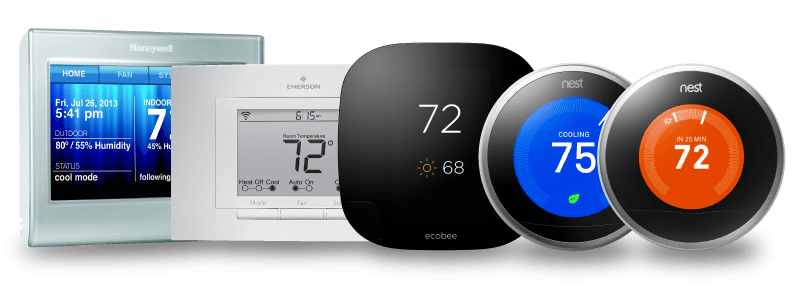If solar energy was a movie, it would be Ocean’s 11. That is to say: A big hit. That makes wind energy Ocean’s 12: Lesser-known, but still popular. Then there’s ocean energy, that’s the one nobody has ever heard of: That’s Ocean’s 13.
This post will provide an overview on the “other, other” renewable energy resource. The one quietly lapping at our shores. Ocean energy. (Incidentally, as Head of Marketing at an energy company, as well as a Steven Soderbergh fan, I feel uniquely qualified to write this post.)
In December 2017, the journal ‘Renewable Energy’ published an article titled, “A revised assessment of Australia’s national wave energy resource“. While the article itself was a little… Ahem, dry… The point of the article was positive. The authors concluded, “Total integrated wave energy flux across the 200 m contour is 2,730 TWh/yr.”
What does this mean? In a nutshell (seashell?), it means ocean energy is a very real opportunity for Australia to diversify its renewable energy mix. Let’s dive in and take a look at ocean energy in more detail, before we circle back to the numbers.
What is ocean renewable energy?
The ocean can provide at least two sources of renewable energy:
- Mechanical (or kinetic) energy, that is, the movement of water in tides and waves.
- Thermal energy, by exploiting the temperature difference between deep ocean water and surface water.
Both these sources meet the definition of “ocean renewable energy”, although mechanical energy will be the focus of this article.
If you trace the origins of ocean energy back, they ultimately derive from the sun. For practical purposes, the sun’s energy is infinite, and therefore meets the definition of “renewable”. (Compare this to, say, coal, which is a finite resource.)
Globally, the potential of ocean energy is breathtaking. If fully exploited, it’s estimated that 40% of the world’s power demand could be supplied by this resource. And in Australia, that figure is way higher.
How is electricity generated at sea?
Theoretically, the energy of tides, waves and thermals can be converted to electricity using many different methods.
As far back as 2001, there were already over 1,000 patents registered by companies hopeful of generating electricity from the ocean, for profit. In practice, however, there are only a few methods which are currently viable, and all of them are based on mechanical principals.
Utilising a tidal barrage or dam
Conventional hydroelectric power stations use the kinetic energy of water moving from a higher point to a lower point, to power turbines, which then generate electricity. Tidal energy can be used to drive turbines in exactly the same fashion. Either the incoming tide, or the outgoing tide can be used, but the latter is more common.
A real-world example is the Rance Tidal Power Station, which is located in Brittany, France, on the estuary of the Rance River. When it opened in 1966 it was the world’s first tidal power station, and until recently has been the largest.
During high tide, water flows into a tidal basin, and is trapped by sluice gates. At low tide, this water is released, and powers turbines as it rushes back out to sea.

Using underwater turbines
Can you picture a wind turbine? Now imagine one of these, underwater. Underwater turbines have one huge advantage over wind turbines though: Efficiency. The amount of electricity a turbine produces is proportional to the density of whatever is causing it to turn. Because water is hundreds of times more dense than air, a turbine submerged in water is capable of producing hundreds of times the power output of its land-bound counterpart.
Unfortunately, this factor is offset by significantly higher costs of construction and maintenance associated with submerging turbines in salt water. Did somebody say “corrosion”? The following picture should give you a better idea of what we’re dealing with – it shows technology developed by Siemens:

By surface-following attenuators (line absorbers)
There was a lot of excitement around this method a decade or so ago. Surface-following attenuators are essentially a series of large pipes, connected end-to-end by hinged-joints that sit semi-submerged on the ocean’s surface. Here’s what they look like:
Hydraulic rams in the hinges of these devices resist the motion of the waves. This action, in turn, pumps high pressure oil through hydraulic motors, which themselves generate electricity. Electrical transmission lines transport this electricity back to shore. (They also tether the line absorbers to the ocean floor, to stop them floating away!)
The fact this system can generate electricity out to sea is a major benefit. (Compare this to the first two methods listed, which require proximity to shore.)
Scottish company Pelamis Wave Power successfully installed a 2.5mW wave farm off the coast of Portugal in September 2008. At the time, they speculated that a wave farm of 1,220 square kilometres could power every home in the UK…
…sadly, the company has now gone bankrupt. Wave Energy Scotland (a Scottish Government body) has since taken control of the intellectual property. And therein lies the rub: Commercial realities strike again.
Is ocean energy really viable?
With more than half the world’s population — and over 80% in Australia — living within 60kms of a coast, supplying this energy is genuinely viable.
Ocean energy also represents a good opportunity to reduce carbon emissions associated with burning fossil fuels. Sure, we may find a way to deal with atmospheric change. But, next problem: within the next 200 years, the world’s supply of fossil fuels is predicted to run out. No matter which way you cut it, we need to start thinking long-term.
Sold? Great. Now, where did we leave it with those numbers?
Australia’s ocean energy potential
Ocean renewable energy is about three times more predicable than wind energy. Wave and tidal energy also has a lot more potential than wind energy. The former is quoted in terawatt-hours per year (TWh/yr), the latter merely in gigawatts (GW).
Remember earlier we said, “Total integrated wave energy flux across the 200 m contour is 2,730 TWh/yr”?
Let’s define the “contour” first. Imagine you’re standing on a beach in Australia, looking out to sea. At some point, the water depth is going to reach 200 meters. Mark that point on a map, and then repeat this exercise all the way around the Australian coastline. Finally, contact these points and you have a contour line on a map, and that’s the 200 m contour.
So if we were to utilise ocean energy around the entire Australian coastline where the water is 200 meters deep, we would get 2,730 TWh/yr of energy for our trouble. If the US were to do the same around their coastline, they’d get a very similar figure of 2,640 TWh/yr.
To put this into perspective, just one TWh/yr of energy would supply about 93,850 average American homes for 1-year. In 2013 the entire electricity production of the US was 4,110 TWh/yr.
In Australia, our entire country generated just 252 TWh/yr of electricity in 2014/15, According to the Department of Industry, Innovation and Science’s Australian Energy Update 2016.
Getting real: Recoverable resource
Of course, it would be unrealistic to think we could harness all this energy. This is for many reasons, both commercial and environmental. So we need to think in terms of “recoverable resource”. In the US, the Electric Power Research Institute (EPRI) has estimated their total recoverable resource at 1,170 TWh/yr – almost one third of usage.
In Australia, recoverable resource data isn’t readily available, but given the similarities in the total integrated wave energy flux figures, I’m going to take a leap of faith and guess it’s a similar figure at 1,170 TWh/yr. Which is more than four times Australia’s total electricity generation.
The only thing seeming to stop us at the moment, is the cost of deploying these technologies. Like solar, in time, this technology can only become more cost-effective. The CSIRO is working on it, as we speak.
I find these figures exciting. To be honest, more exciting than the prospect of yet another Ocean’s movie. The fact that there is an almost unlimited, clean and completely renewable source of energy surrounding Australia gives me hope. Hope, that by the time we’re up to Ocean’s 20, we’ll be watching on a big screen powered by energy from the ocean.








